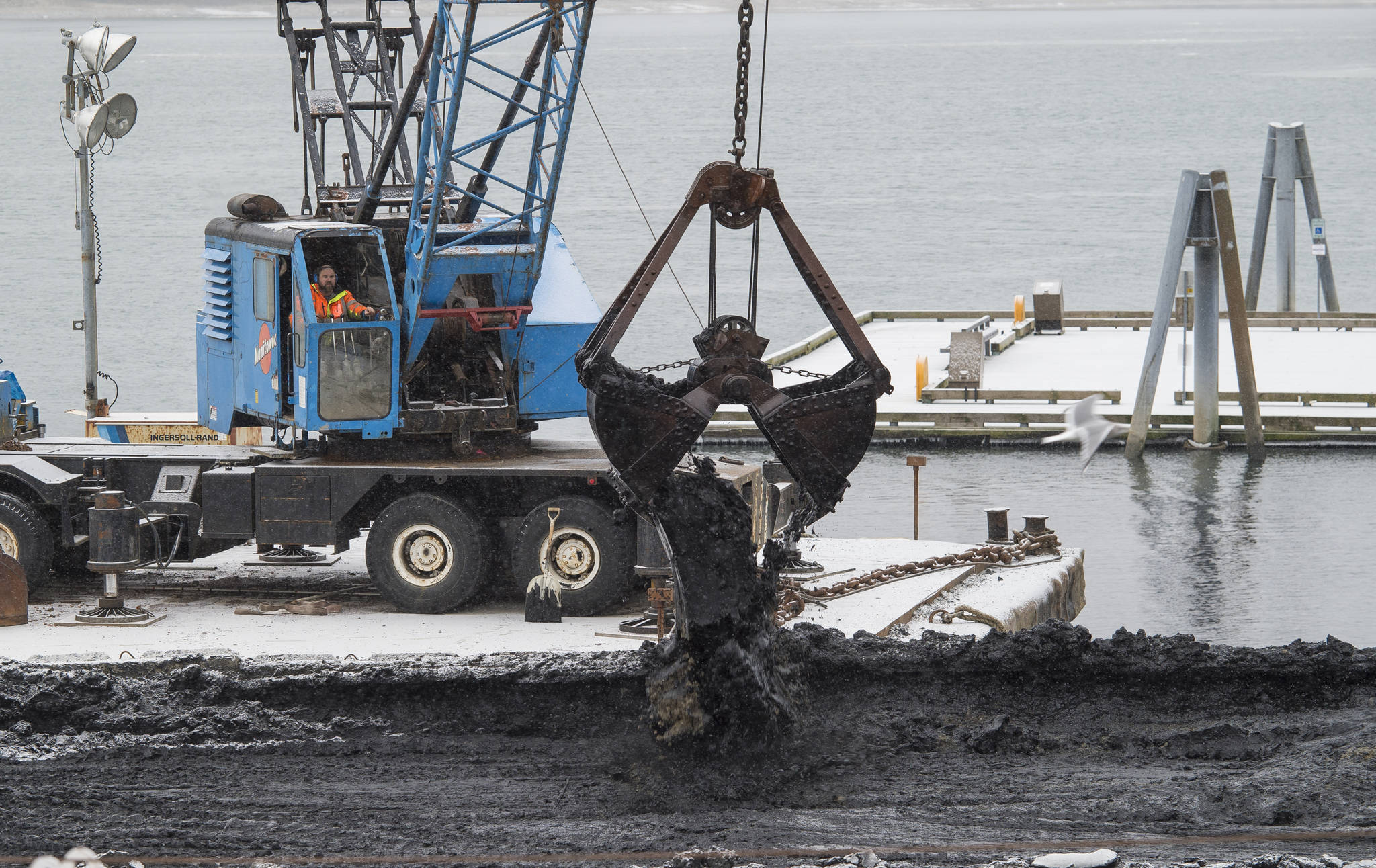If you’ve driven by the Macaulay Salmon Hatchery lately, you might have noticed a bit of construction work offshore.
That’s because Douglas Island Pink and Chum, Inc., the hatchery’s parent company, has been clearing sediment and debris below the hatchery’s net pen.
The dredging project is about halfway over. When it’s done, Operations Manager Brock Meredith said, growing salmon fry and returning adult salmon will have more room to start and complete their life cycles.
The hatchery is clearing about 5,000 cubic yards of sediment and debris. The work has been planned since DIPAC began operations but hasn’t been carried out in more than 16 years.
“We’re trying to get it down close to where it was when the building was built,” Meredith said.
They hope to clear down to about 24 feet below sea level. Fish poop, shifting sediment and a natural process called “isostatic rebound” — the geologic phenomenon of land rising in Southeast after glaciers retreat — has shortened the distance between the bottom of Macauley’s net pen, where they rear salmon fry, and the bottom of Gastineau Channel.
It’s also reduced the space available near the hatchery’s fish ladder, which returning adult chum and pink salmon climb when spawning.
“There’s not enough room for the adults to hold prior to getting up the ladder,” Meredith explained. “The nets had been touching bottom and the bottom couple feet might have touched the bottom. That reduces the size of the net which could be detrimental to the rearing of the fry.”
Per an Army Corps of Engineers permit, the spoils from the dredging will be transferred to an underwater hole close to the Douglas Island side of Gastineau Channel near a marker opposite the end of Channel Drive.
Meredith said the dredging shouldn’t cause any environmental harm. The sediment was tested by the state of Alaska’s Department of Environmental Conservation during a permitting process that lasted more than a year.

